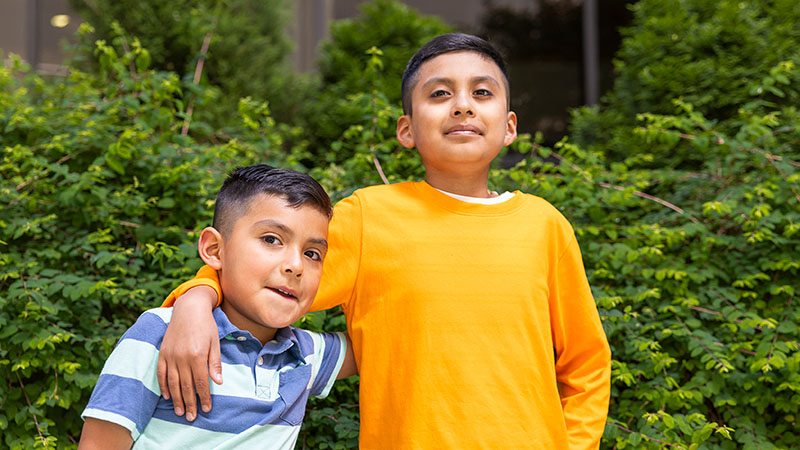Begin a Lifetime of Sun Safety Early in Childhood
7.29.2025 | Heather Cooper

Exposure to ultraviolet (UV) radiation from the sun early in childhood increases the risk of developing skin cancer later in life. For the majority of people, childhood is when the most sun damage occurs because that’s the period in their lives that they spend the most time outdoors.
Fortunately, childhood is also when many good habits form, like behaviors to increase sun protection. It makes sense to build sun safety practices into your child’s routines early on. It will serve them well throughout life and help prevent skin cancer.
UV Radiation and Skin Cancer
UV radiation causes damage to the DNA of skin cells, allowing the possibility for skin cancer to develop when the damage affects skin cell growth. The International Agency for Research on Cancer, a part of the World Health Organization, classified UV radiation as a Group 1 carcinogen because it can cause cancer in humans.
Facts about skin cancer
- Skin cancer is the most common cancer in the U.S., and rates of skin cancer continue to rise.
- Melanoma is the deadliest form of skin cancer.
- Melanoma can be difficult to detect in children because it often appears differently than it does in adults.
- Skin cancer in childhood is rare but UV exposure adds up over time. Reducing UV exposure in childhood reduces the risk of developing skin cancer in the future.
- Anyone can get skin cancer, not just people with fair skin.
- Most skin cancers are preventable.
Use Layers of Sun Protection
Sunscreen is only one piece of a good sun protection plan. Use layers of protection for sun safety:
- If possible, plan activities that are out in the open for earlier in the morning or later in the afternoon and evening when the sun’s rays are less intense.
- Wear a hat with a wide brim.
- Wear sunglasses that provide 100% UV protection. Check the label for the UV protection level before purchasing sunglasses, or purchase from an optician to be extra sure of the product’s claim.
- Wear protective clothing. Some clothing companies make special sun protective clothing, but it can be expensive. If expense is a barrier, you can still get some sun protection by wearing lightweight, tight-knit clothing, with long sleeves and long pant legs. T-shirts and beach cover-ups provide some protection as well.
- Use a broad-spectrum sunscreen with a sun protection factor (SPF) of at least 30. Apply a generous amount of sunscreen 30 minutes before going outside. (For an adult in a swimsuit, use a golf ball-sized amount; less for kids, but slop it on generously.) Reapply every two hours and after swimming, sweating or using a towel.
Use all of these layers of protection together to increase your family’s level of sun protection.
Choosing Sunscreen
There are many choices of sunscreens. Based on information from the Environmental Working Group (EWG) and others, some people choose to avoid sunscreens that include oxybenzone because it may disrupt hormones. Some people choose to avoid sunscreens that list retinyl palmitate as an ingredient. There is a risk of inhaling spray sunscreens and it’s more difficult to apply the spray evenly. Visit EWG’s Guide to Sunscreens if you’re interested in learning more about sunscreens.
The important thing is to buy the sunscreen that you will reliably use. No matter your choice, don’t forget to pay attention to the expiration date on sunscreen you’re purchasing or applying.
More Sun Safety Tips
- Encourage your child’s other caregivers, day care provider, school and summer camp program to use safe sun practices.
- Kids need active play too, so don’t let fear of sun exposure cause you to keep them indoors. Layer on the protection and play outside.
- Don’t rely on sun exposure for producing vitamin D. Focus on getting the vitamin D your family needs through a healthy diet and supplements. Ask your doctor if you have questions.
- Keep babies under 6 months out of direct sunlight.
- Don’t allow your teen to use a tanning bed, even for a special occasion.
- Model good sun safety habits.
Remember, sunscreen is a good start, but it’s only one layer of sun protection to protect from skin cancer.
